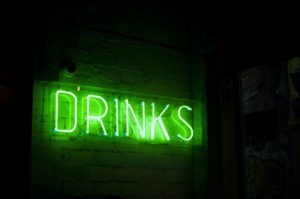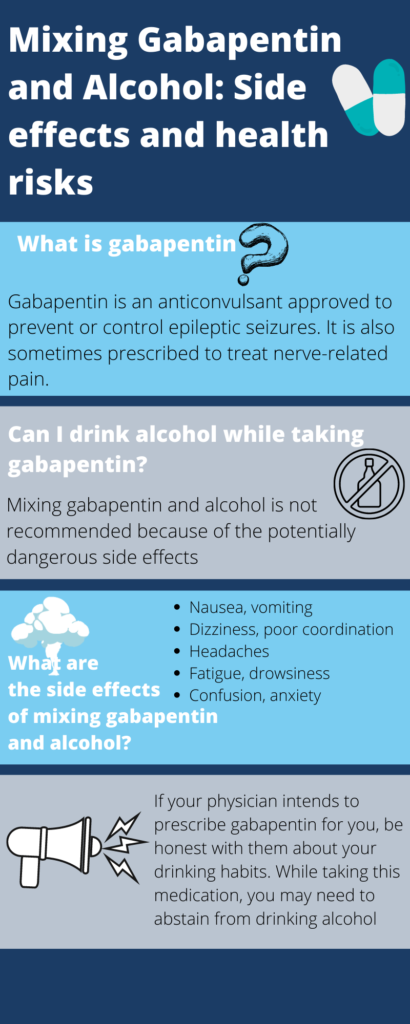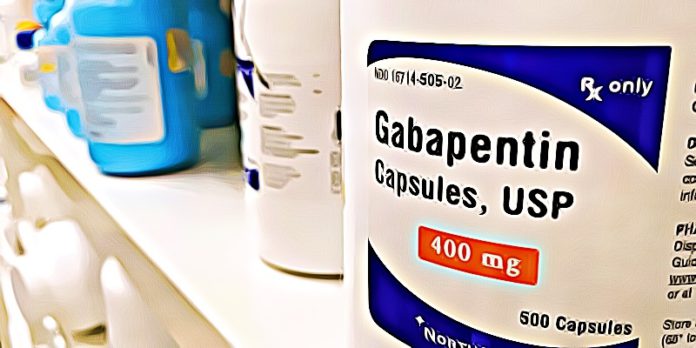What is Gabapentin and Why is it Prescribed?
Gabapentin is one of those medications with a rising profile. An anticonvulsant, it is primarily prescribed to control or prevent seizures. Though not technically approved to treat nerve pain, adults recovering from a bout of shingles may also receive a prescription. This is known as “off-label” use. Mixing gabapentin and alcohol is not suggested.
In 2016, there were 64 million prescriptions dispensed, “with estimates of off-label prescribing as high as 95%.”[1] It is the tenth most prescribed drug in the United States. The most common brand of gabapentin is Neurontin.
Other “off-label” uses of gabapentin may include prescriptions for the treatment of post-surgery nausea, vomiting, and pain, for instance. Additionally, it gained traction in the treatment of alcohol dependence and withdrawal, and for other substance use disorders.
However, some research suggests that gabapentin’s effectiveness for many of these “off-label” conditions is, at best, weak.[2]
How Does Gabapentin Work and What Are the Side Effects?
Gabapentin works by slowing impulses in the nervous system. These are an issue that can cause an epileptic seizure or create nerve pain. Because of this, the FDA approved it as an anticonvulsant in 1993. What’s interesting, though, is that researchers aren’t entirely sure how this works. They do have a best guess, however.
GABA, or gamma butyric acid, is a chemical messenger in the body. It blocks certain types of signals in the brain and decreases activity in the nervous system. GABA sometimes referred to as the “calming neurotransmitter,” helps lessen feelings of anxiety and fear.
With gabapentin, scientists believe the drug helps manage GABA in the brain. In turn, this makes it useful for inhibiting seizures and nerve pain.
Like many other prescription drugs, gabapentin comes with potential side effects. Some of these may dissipate after a period of regular use, but they can include:
- Drowsiness
- Headaches
- Nausea, constipation, or diarrhea
- Weight gain
- Rolling eye movements
- Unsteadiness or clumsiness
It is important for people taking gabapentin to pay attention to their state of mind and mood. In some people, anti-epileptics may cause severe mood swings, anxiety, and depression. These are more common in children[3], but discuss any side effects with your doctor.
Can I Mix Gabapentin and Alcohol?

The answer here is that mixing alcohol and gabapentin is not a good idea. Alcohol is a central nervous system depressant, meaning it slows down breathing. Gabapentin can also slow a person’s breathing. Though it’s not typically a drug associated with fatal overdose, drinking to excess while taking gabapentin is potentially dangerous.
The mixture can intensify the side effects of both substances and may lead to issues like the following:
- Nausea, digestive problems, or vomiting
- Dizziness and poor coordination
- Fatigue or drowsiness
- Headaches
- Confusion or anxiety issues
If your doctor intends to write you a prescription for gabapentin, be honest about your drinking habits. Your physician may suggest that you abstain from mixing gabapentin and alcohol or severely limit your alcohol intake.

Mixing Gabapentin and Alcohol Use Disorder
Aside from the serious health risks of mixing gabapentin and alcohol, struggling with alcohol dependency poses its own problems.
An estimated 14 million adults met the diagnostic criteria for alcohol use disorder in 2018.[4]
Remember, gabapentin is the tenth most prescribed medication in the country. So, quite a few people who struggle with alcohol dependency are likely also using gabapentin. If you fall into this category, there are steps you can take to address potential health dangers.
First, ask your physician if it’s safe to continue taking gabapentin while living with untreated alcohol use disorder. Second, ask about getting professional treatment for alcohol addiction.
There is no shame in battling addiction. It is a chronic, relapsing disease, and similar to other chronic illnesses, many people respond well to treatment.
Advanced alcoholism may require a period of withdrawal and detox. This condition is serious but can be managed safely in many residential treatment facilities. After detox, it takes patience as the body begins to heal and the brain’s chemical balance returns to normal.
This is why a lot of people recovering from addiction chose to get treatment in a residential facility. It provides a comfortable and supportive atmosphere for recovery.
Additionally, professional counselors and staff are available for one-on-one therapy, and for group or family counseling, if needed.
Before mixing gabapentin and alcohol, speak to your physician. If you’re living with alcohol dependency, ask about professional addiction treatment. It is never too soon and it is never too late.
Sources
[1] Trends in Gabapentin Prescribing in a Commercially Insured Adult U.S. Population – Journal of Managed Care & Specialty Pharmacy (JMCP)
[2] Gabapentin for Off-Label Use: Evidence-Based or Cause for Concern – Sage journals
[3] Gabapentin (Oral Route) – Mayo Clinic
[4] Alcohol Facts and Statistics – National Institute on Alcohol Abuse and Alcoholism
















